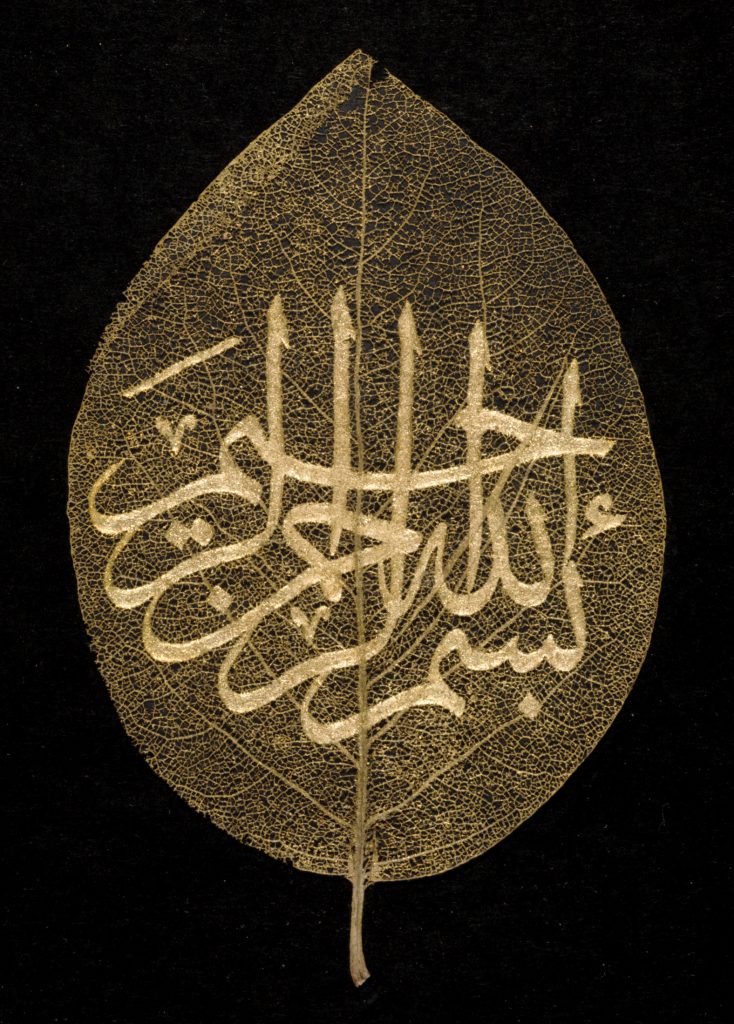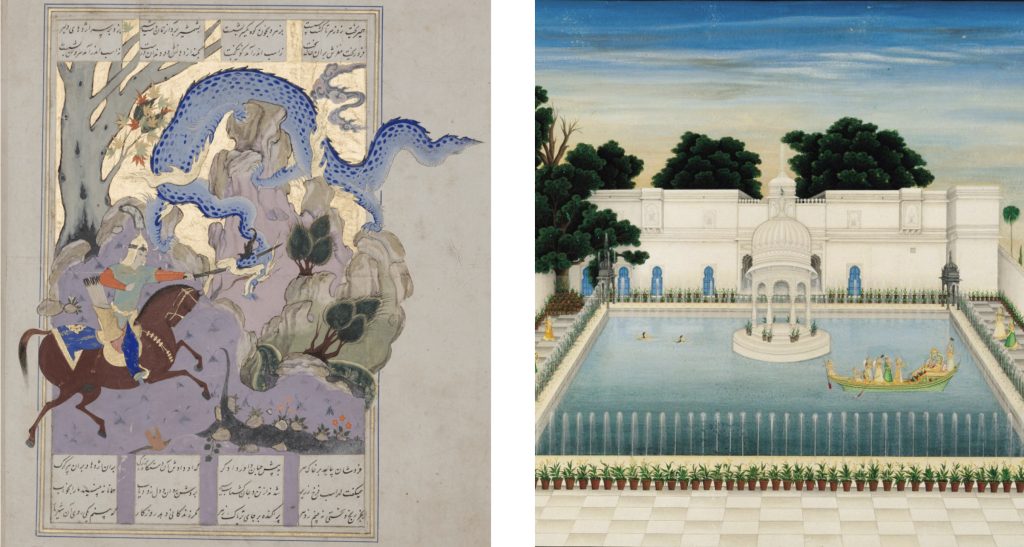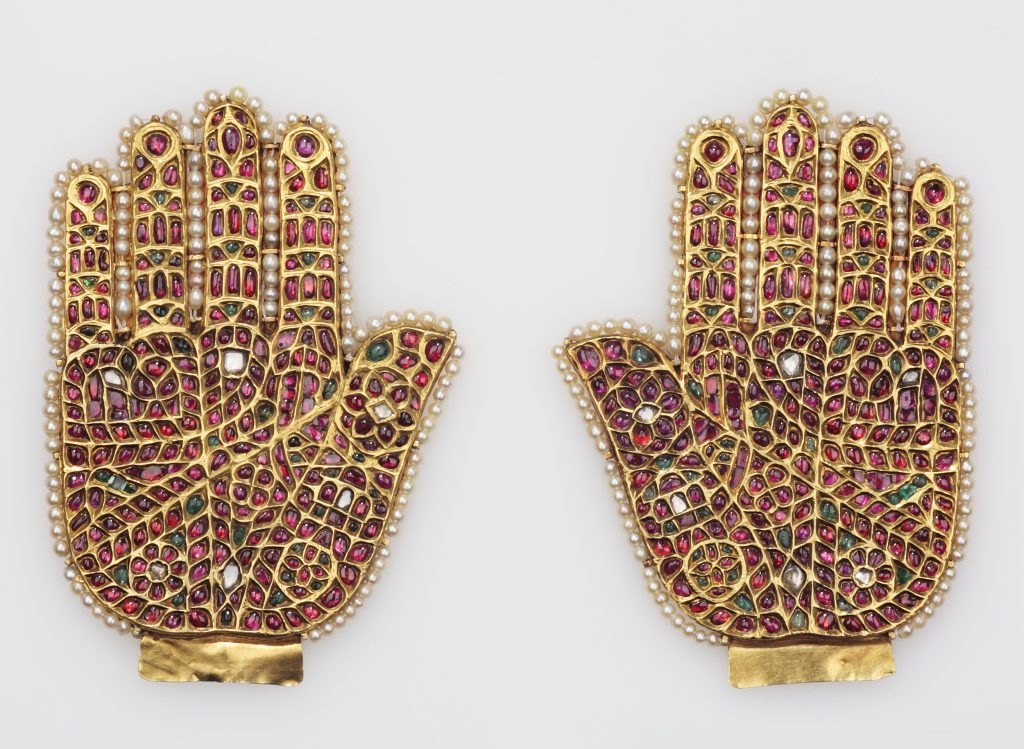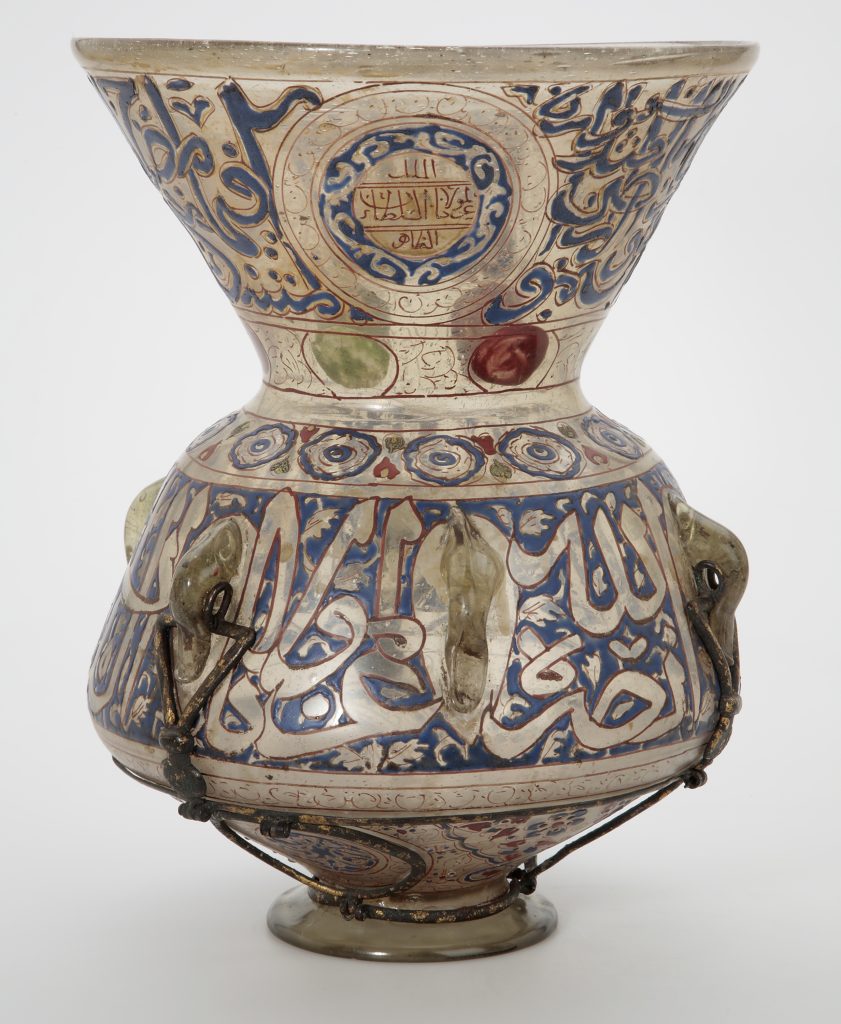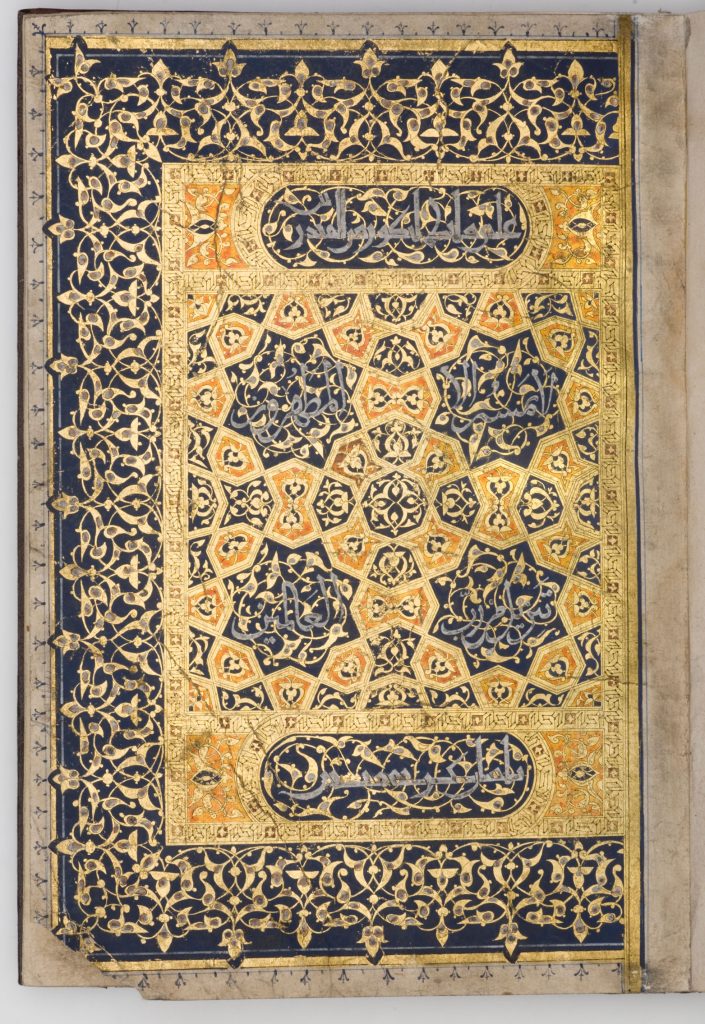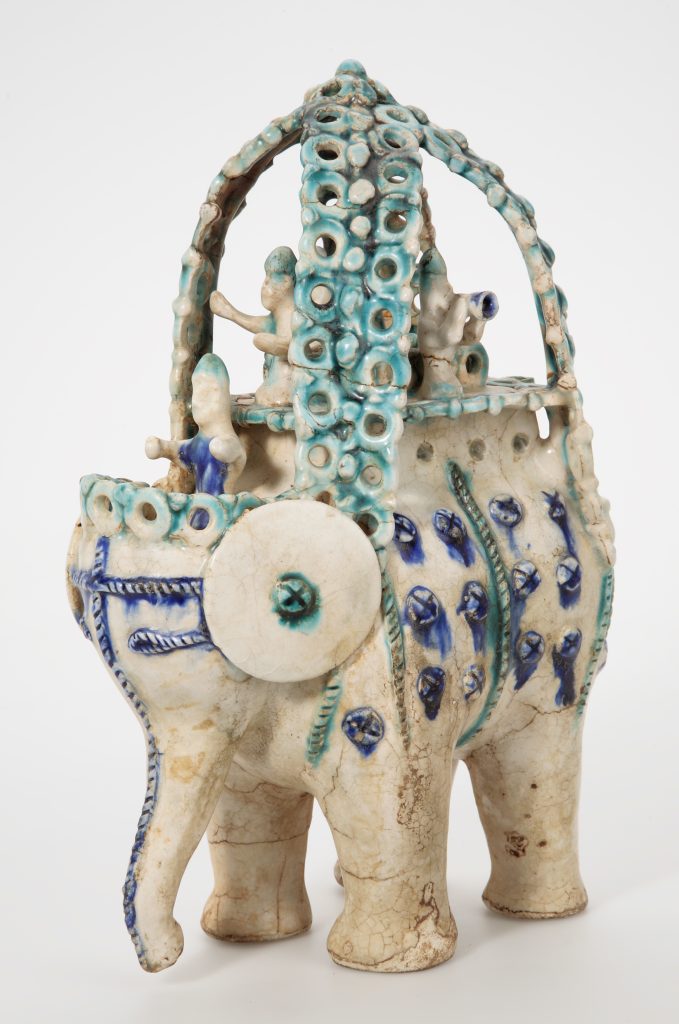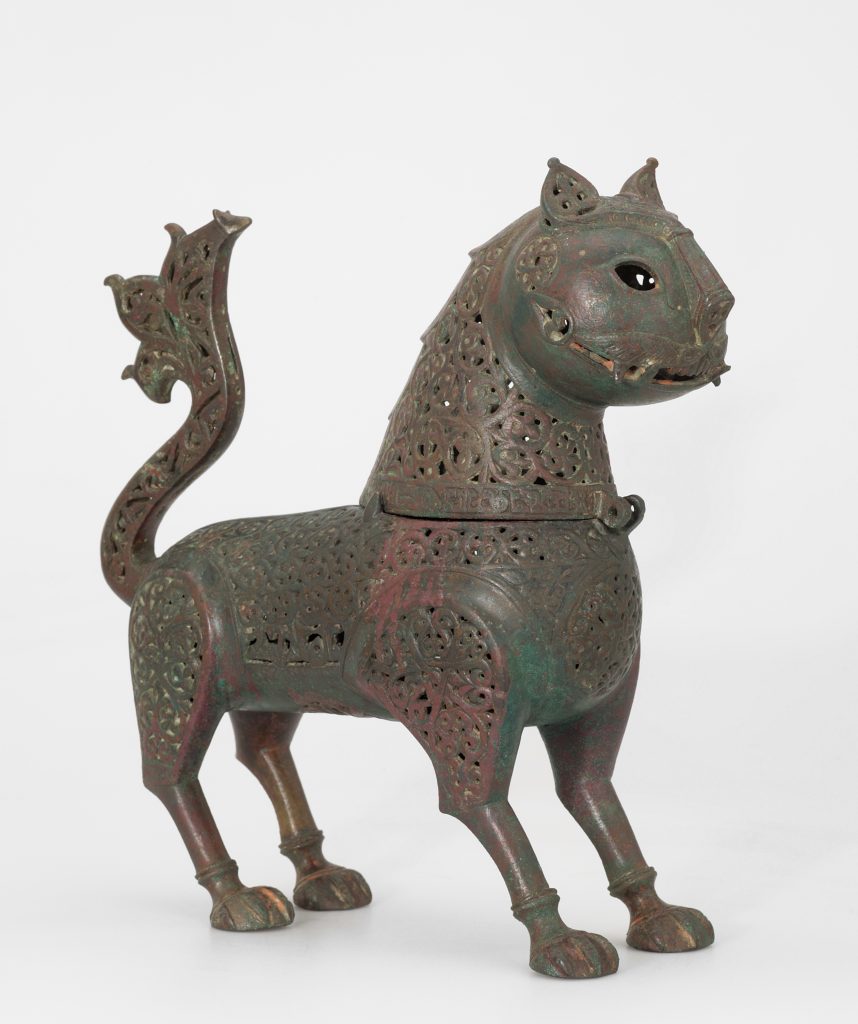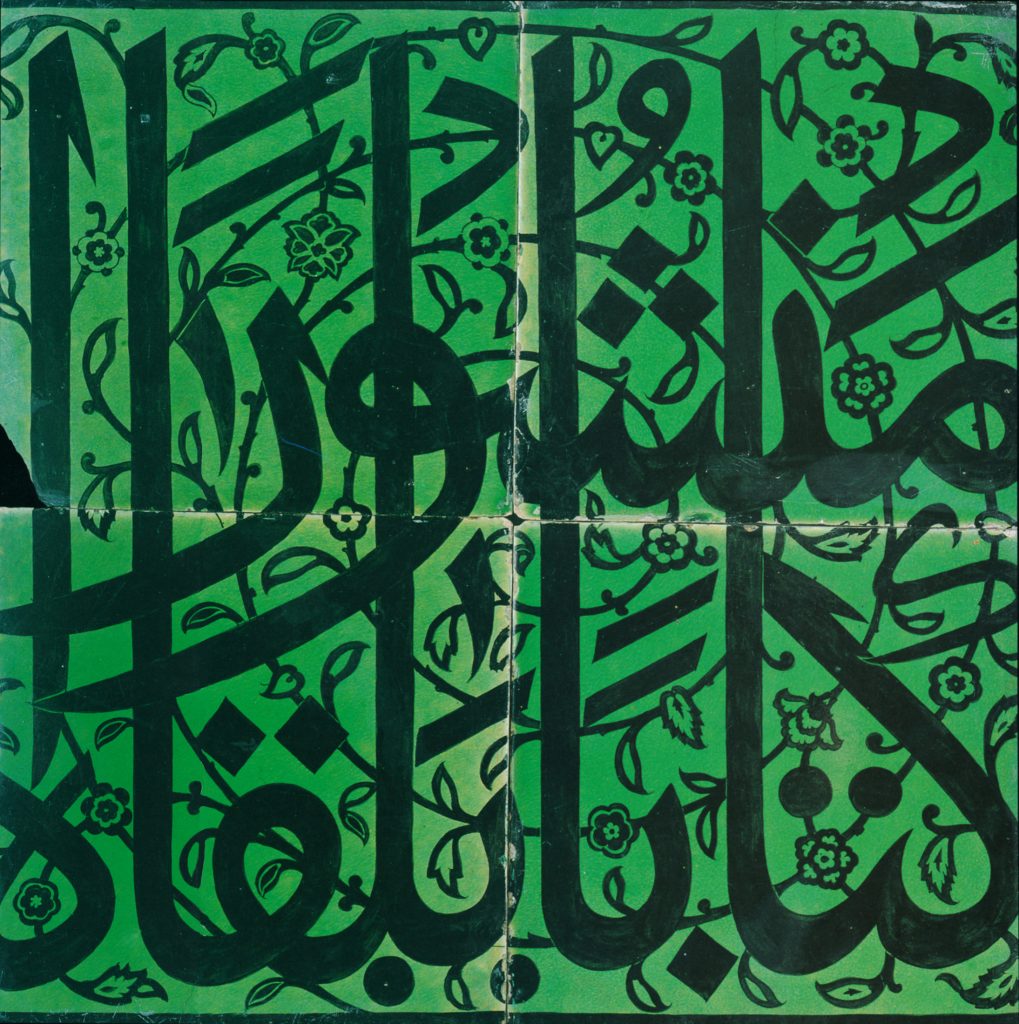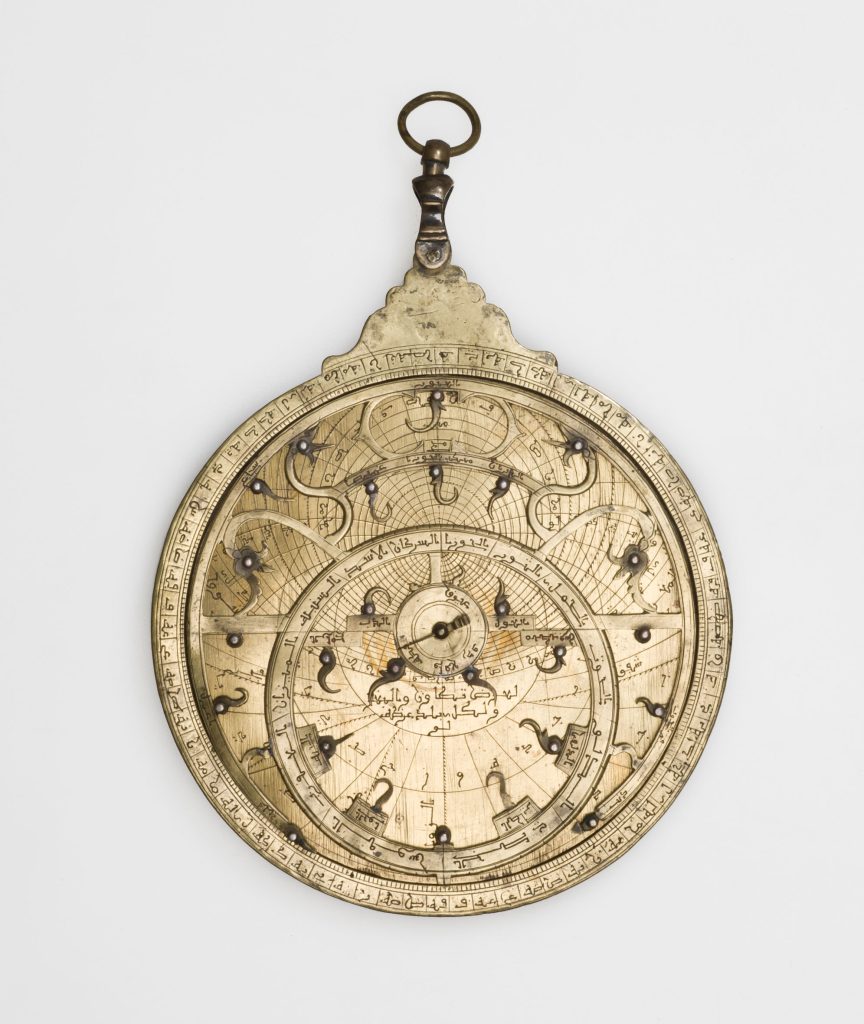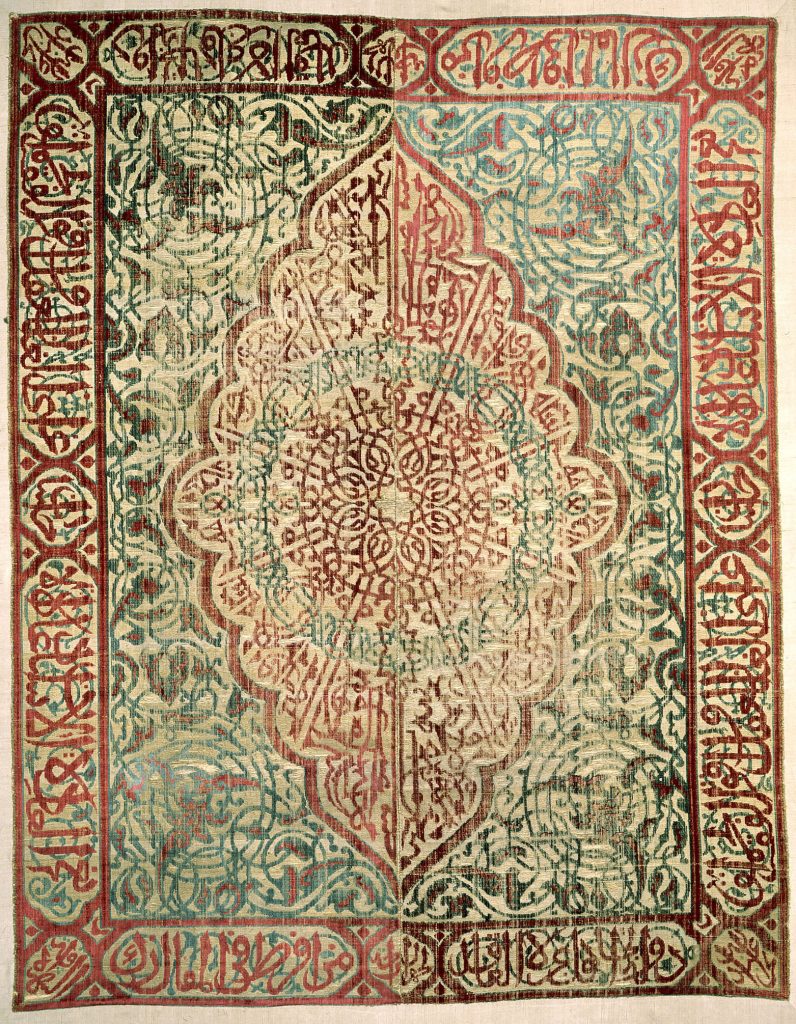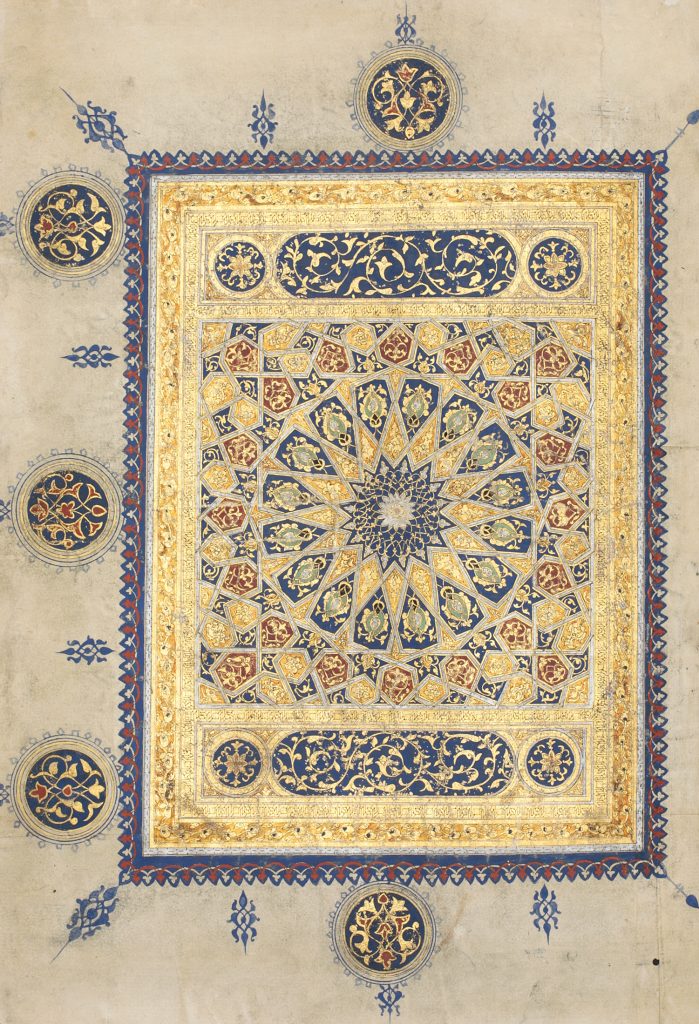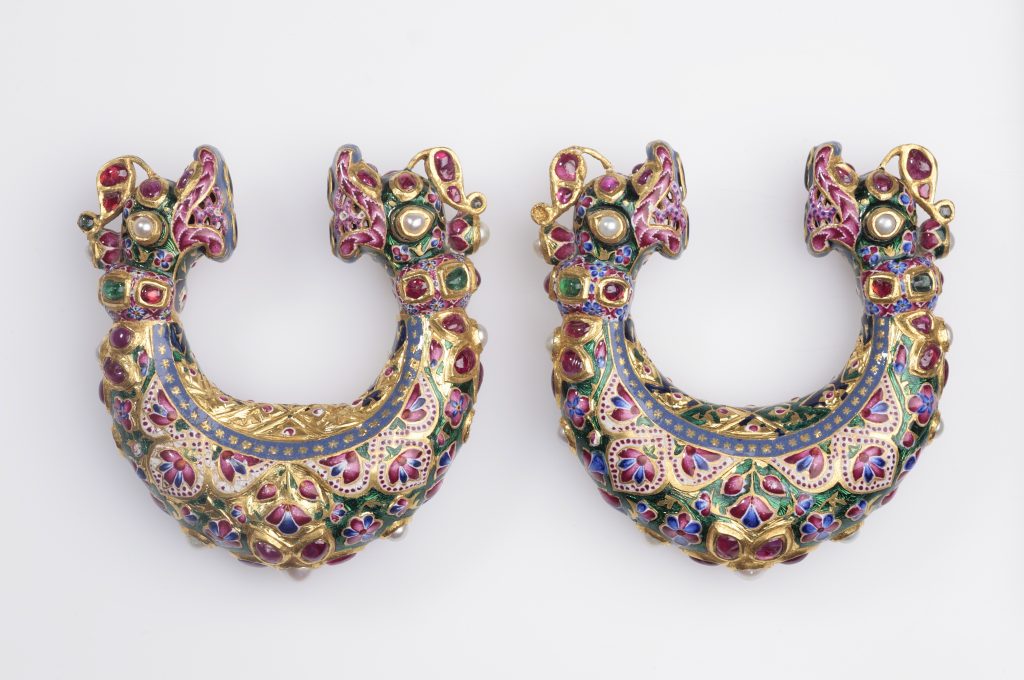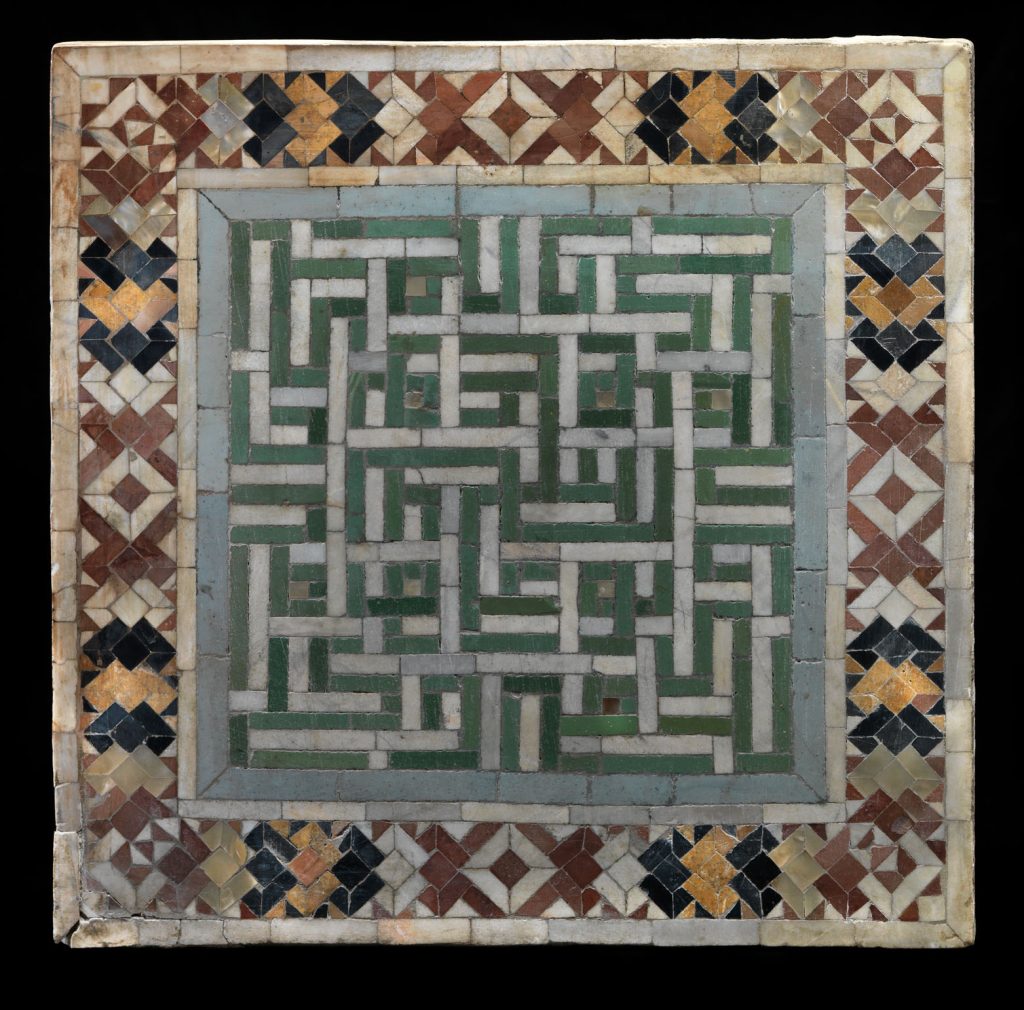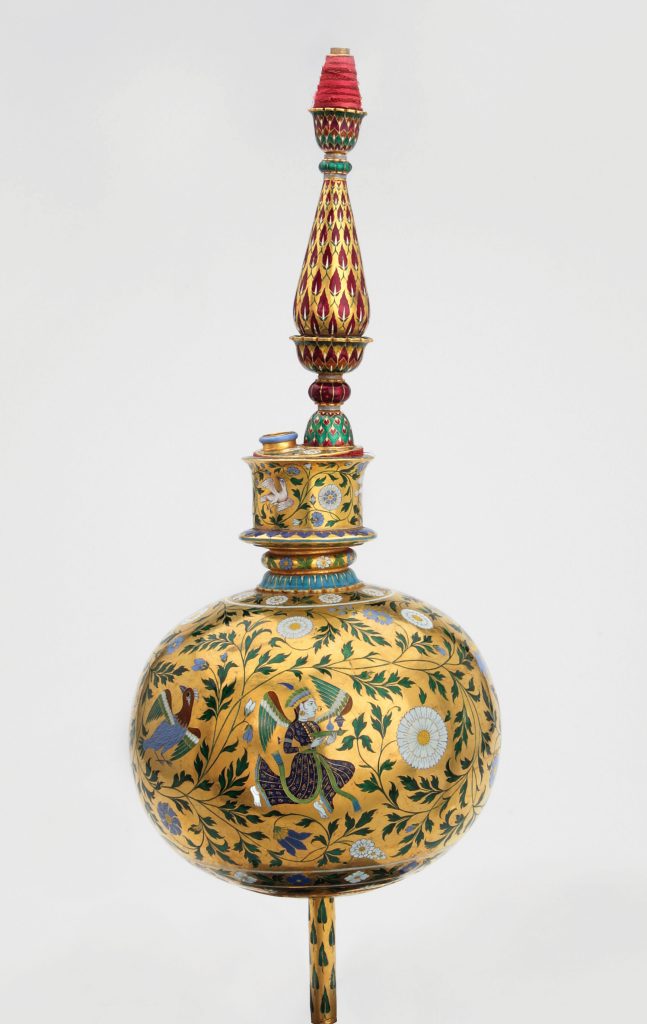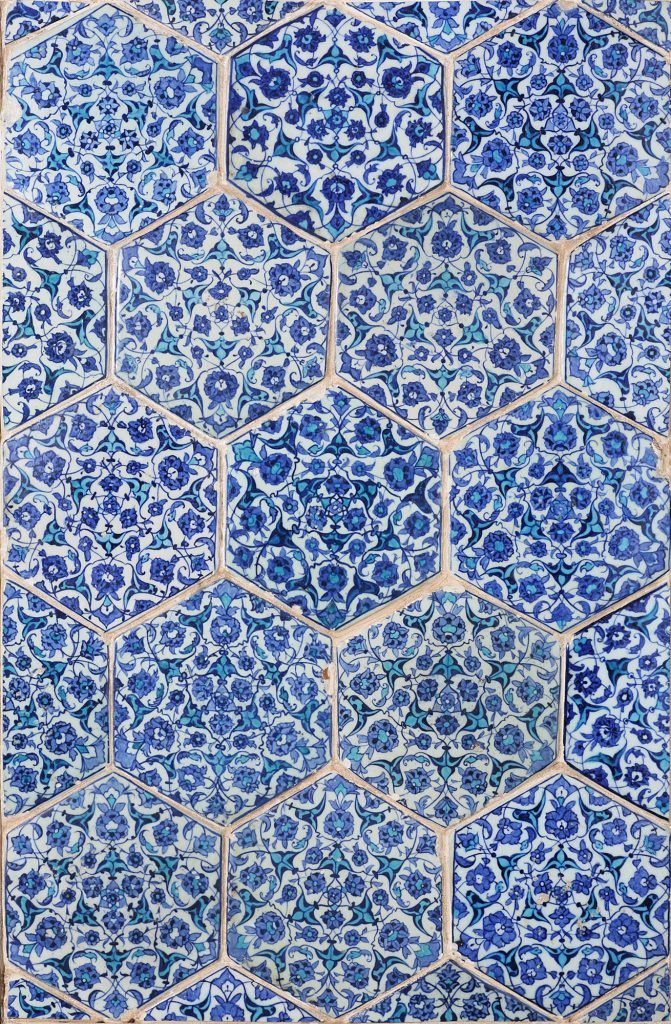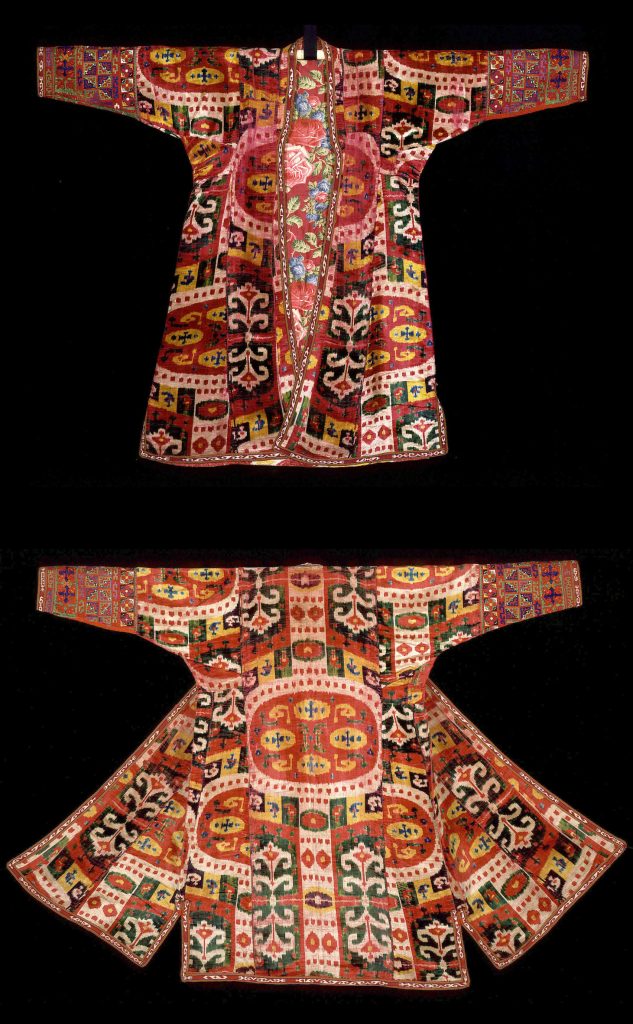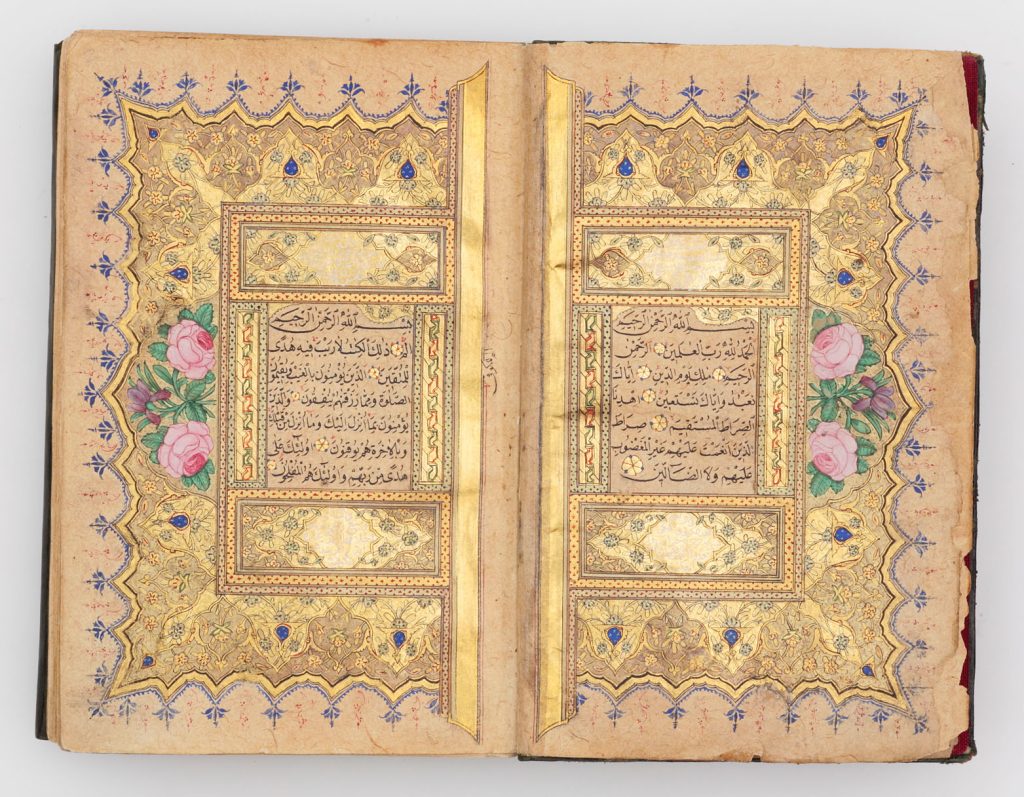Looking through Cairo’s Museum of Islamic Art, the rich and diverse history of the region is clear to see. From the incredible tilework to the skillfully painted images and masterly sculpted pottery, you get a sense of how from century to century and from province to province, different techniques and styles flourished and influenced each other. With often a surprising abundance of colors and the unique use of geometric forms, Islamic art is unique and stands distinct in art history.
When exploring the museum’s collection up close, however, you’ll start noticing that not all Islamic art is in fact Islamic. While some of the beautiful objects have no relation to religion in any way, some of the objects are actually Coptic and depict the crucifix, and others were made by Jewish artisans. Similarly, the incredible Khalili Collection of Islamic Art, which highlights some of the most superb artworks from the Muslim world, also has beautifully illustrated Persian folios depicting Gushtasp, a major religious figure from the religion of Zoroastrianism. This self-described collection of Islamic art also features a painting of a Mughul-era palace being enjoyed by the Hindu gods Krishna and Radha. So what do we actually mean when we talk about Islamic art, if these are included in the definition?
Islamic art does not refer to the faith itself, but to a time period and civilization. Encompassing essentially all art produced by populations under Muslim rule since the seventh century; Islamic art can be both representational and nonrepresentational and incorporates everything from the art of arabesque and calligraphy to geometric patterns and ceramics. Islamic art is diverse not just in its forms, but also in terms of the people who made it as the Islamic civilization including people from West Africa all the way to South Asia and likewise including not just Muslims, but people of all faiths. In this way, Islamic art is as diverse as Islamic civilization and gives us an insight into the cultural richness of the period.
In this article, we decided to take a look through the incredible selection of Islamic art from the Khalili Collections to highlight an array of objects that are as beautiful and diverse as the places they are from. Looking through museums or collections of Islamic art can help break down our preconceived notions of cultural uniformity that often unfairly plague the world’s understanding of the Islamic world. However, in understanding difference and diversity, we can also begin to see the links and connections that also connect distant peoples.
The two ‘Hands of Fatimah’ from India
Heralding from India and estimated to be at least two hundred years old, this pair of incredibly well-detailed and luxuriously adorned hands depict the ‘Hands of Fatimah.’ Still to this day in India and Bangladesh, the symbol of the ‘Hands of Fatimah’ is incredibly popular among the Muslim population. The four fingers and thumb are meant to represent the Prophet Mohammed along with his daughter Fatimah, son-in-law Ali, and their two sons Hassan and Hussien.
The Islamic declaration of faith written in gold on a leaf from Turkey
As a display of both beauty and fine craftsmanship, the delicate dried tobacco leaf has been carefully applied with gold. Unlike anything in Islamic art before in terms of its form, this roughly two-hundred-year-old piece makes an interesting juxtaposition between the beauty of nature and god by placing the declaration of faith on top of the complex skeleton of the dried leaf.
Six hundred-year-old mosque lamp from Cairo, Egypt
This Mamluk-era glass lamp that would have adorned the walls of a mosque and others like it became a distinctive and iconic part of Islamic art. While mostly associated with Egypt, this type of glass mosque lamp could also be found in other Arab capitals. The interest in these objects and admiration for the carefully painted calligraphy by Western audiences in the 19th century led to several glass factories in Paris and Austria to actually make fakes and imitations to sell to collectors.
Page from a Mamluk-era decorated Quran
This incredibly complex-looking design, like many other types of Islamic art, is based upon Islamic geometry. This aspect of Islamic art is arguably its most unique feature and helps make Islamic art so unique.
Seven hundred-year-old elephant-shaped jug from Syria
Potentially being an impressive 900 years old, this playful ceramic elephant is actually a vessel for liquids. Held in the hollow center, the contained liquids are then poured out from the elephant’s trunk. A joy of Islamic art is its tendency to make everyday objects like water jugs into beautiful objects in their own right.
Persian incense burner in the shape of a lynx
Dating back to the late 12th or early 13th century, this Persian incense burner in the shape of a lynx is an interesting example of Islamic art. While figuratively representing a lynx, the delicately created holes to let in air and let out the perfumed smoke instead following an almost arabesque design.
Palestinian or Syrian tiles dating back roughly 500 years
Although 500 years old, the incredible green of the tiles is still quite astonishing. In addition to the lasting vibrancy of the colors, the clean lines of the inscription also point toward the quality of craftsmanship. These tiles in particular are also believed to have been produced by the same stencil that also produced tiles that now adorn the Dome of the Rock.
Moroccan planispheric astrolabe used for navigation
While advanced in art, Islamic civilization was also well-known for its deep interest in science and astrology. Astrolabes of all varieties were produced across the Islamic world and more often than not paid special attention to how beautiful objects are, despite them having a primarily utilitarian function.
Turkish silk panel that would have been hung on walls
Islamic textiles were regarded worldwide as some of the world’s finest in terms of their quality and design. As a testament to how well-respected they were, from the European Dark Ages, there are many portraits of the Virgin Mary that show her wearing robes with the Islamic declaration of faith stitched into the fabric.
Decorated page of the Quran from fourteenth-century Cairo
Bearing the signature of the artist, Ahmad ibn ‘Ali al-‘Ajami, who in this particular context is usually described as an illuminator, this decorated page of the Quran is impressive in both its beauty and the skill needed by the craftsmen. With the use of real gold leaf, pages such as these are painstakingly produced over several days, if not weeks.
Intricately decorated anklets from Moghul India
With copious amounts of gold and topped off with pearls, emeralds, and rubies, these anklets are a great example of the extravagant and ultra-luxurious jewelry that was produced during the Islamic civilization, especially by the Mughals. While the style of the anklets seems incredibly distant to Arab art at the time, if you look towards Persia and Turkey you can see certain stylistic similarities and influences.
Mamluk-era Kufic inscription made out of marble
Dating back five hundred to six hundred years, this Mamluk panel made out of marble depicts a Kufic inscription. This item like many other examples of Islamic is evidently an opportunity to demonstrate the skill and expertise of craftsmen.
Extravagantly decorated shisha pipe from India
With birds, flowers, and winged figures offering gifts, this shisha pipe is a very extravagant example of Mughul aesthetic sensibilities. Much like other Mughul items, the use of gold is incredibly prominent.
Five hundred-year-old tiles from Turkey
While reflecting a certain understanding of geometric forms, as seen in earlier Islamic art, these 500-year-old tiles from Turkey use floral patterns. Combing the geometric design inherited from nonfigurative Islamic art with the figurative use of floral motifs, tiles like these are a great example of the way different types of Islamic art interacted.
Central Asian coat decorated with flowers
Islamic civilization stretched from West Africa to South Asia, but it also went north to central Asia. This colorful coat is another example of how diverse Islamic art is as a whole and how many peoples and cultures it encompasses.
Decorated Quran from Istanbul combining geometric art with floral motifs
Unlike the more serious-looking illuminated Qurans that had previously come out of Cairo, the above example is very representative of a growing Ottoman aesthetic sensibility at the time to incorporate flora motifs.


